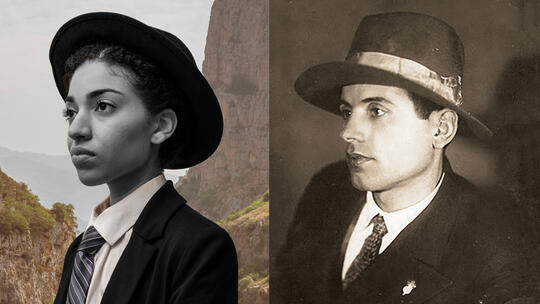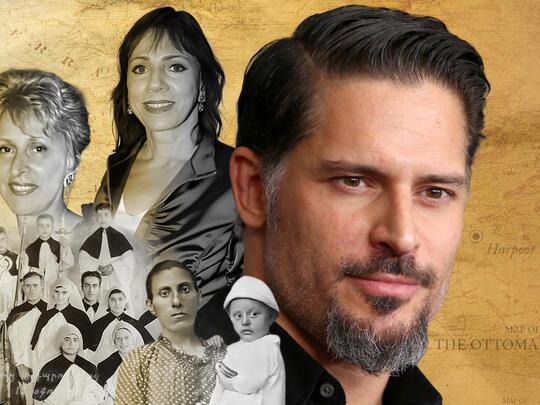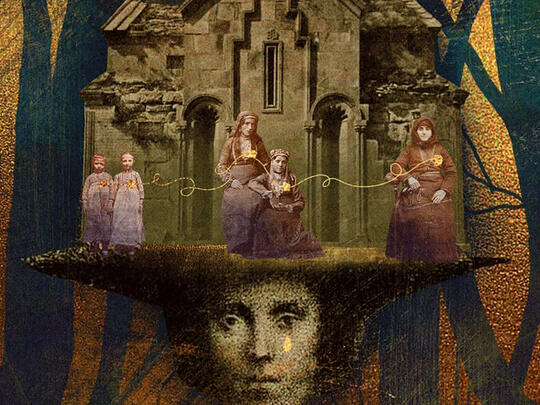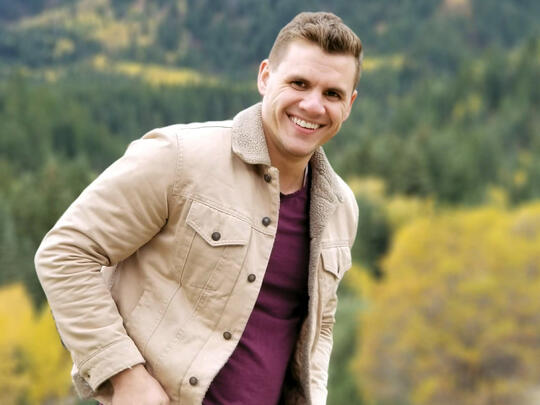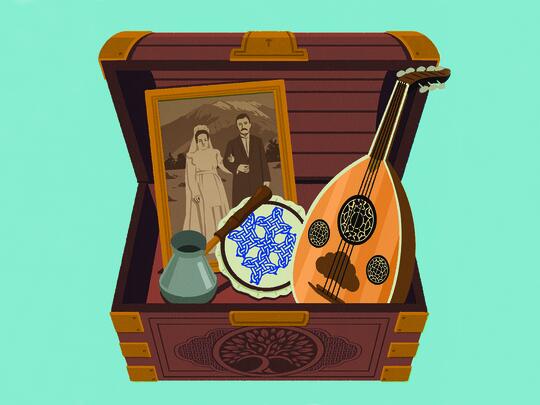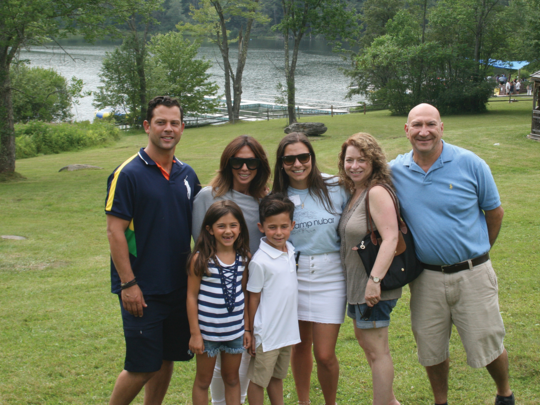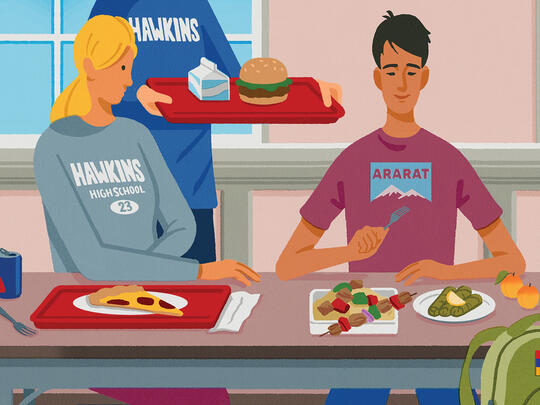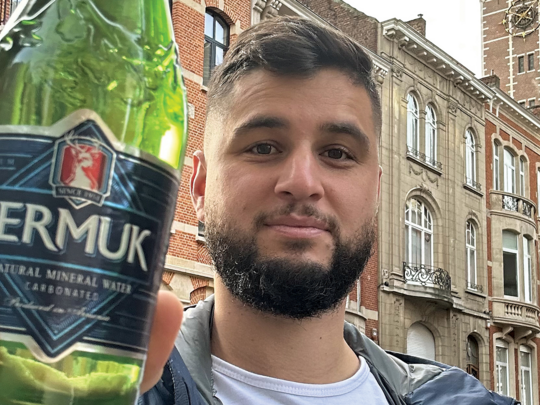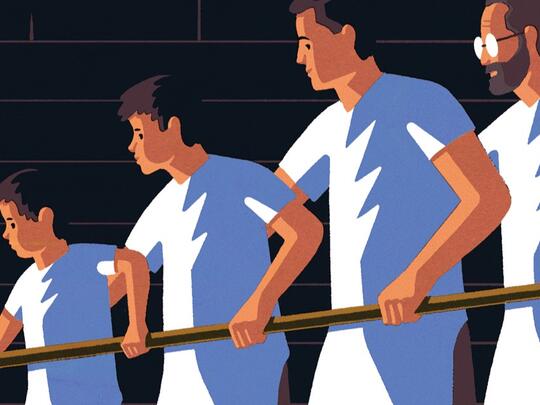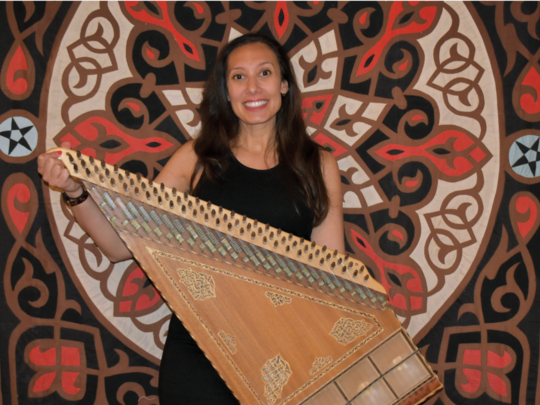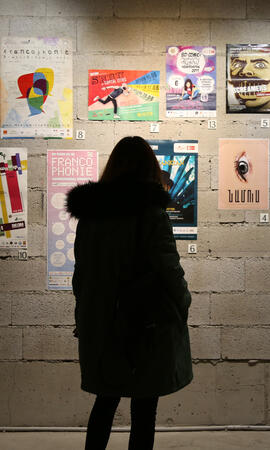In a world that is becoming increasingly diverse and interconnected, being biracial is a more common and complex identity that encompasses a multitude of traditions and experiences. In fact, according to the 2020 U.S. Census, almost 34 million people identified as being of more than one race. Although the portrayal of ethnically diverse families is becoming more common, the unique experience resulting from the meshing of cultures is still underrepresented.
Even more so, the multiracial Armenian identity is still marginalized despite becoming more common over the years according to the pilot phase of the global Armenian Diaspora Survey, a research project conceived and conducted by Hratch Tchilingirian, Associate of the Faculty of Oriental Studies at the University of Oxford, and underwritten by the Gulbenkian Foundation.
This only brings to the surface what it really means to live and experience both cultures in America and the Diaspora, especially two cultures that have been under threat in their own respect. AGBU spoke with three young Black Armenians to explore how they navigated growing up with strong roots, how they navigated their activism, and what it means for their identity today.
The Ardent Advocate
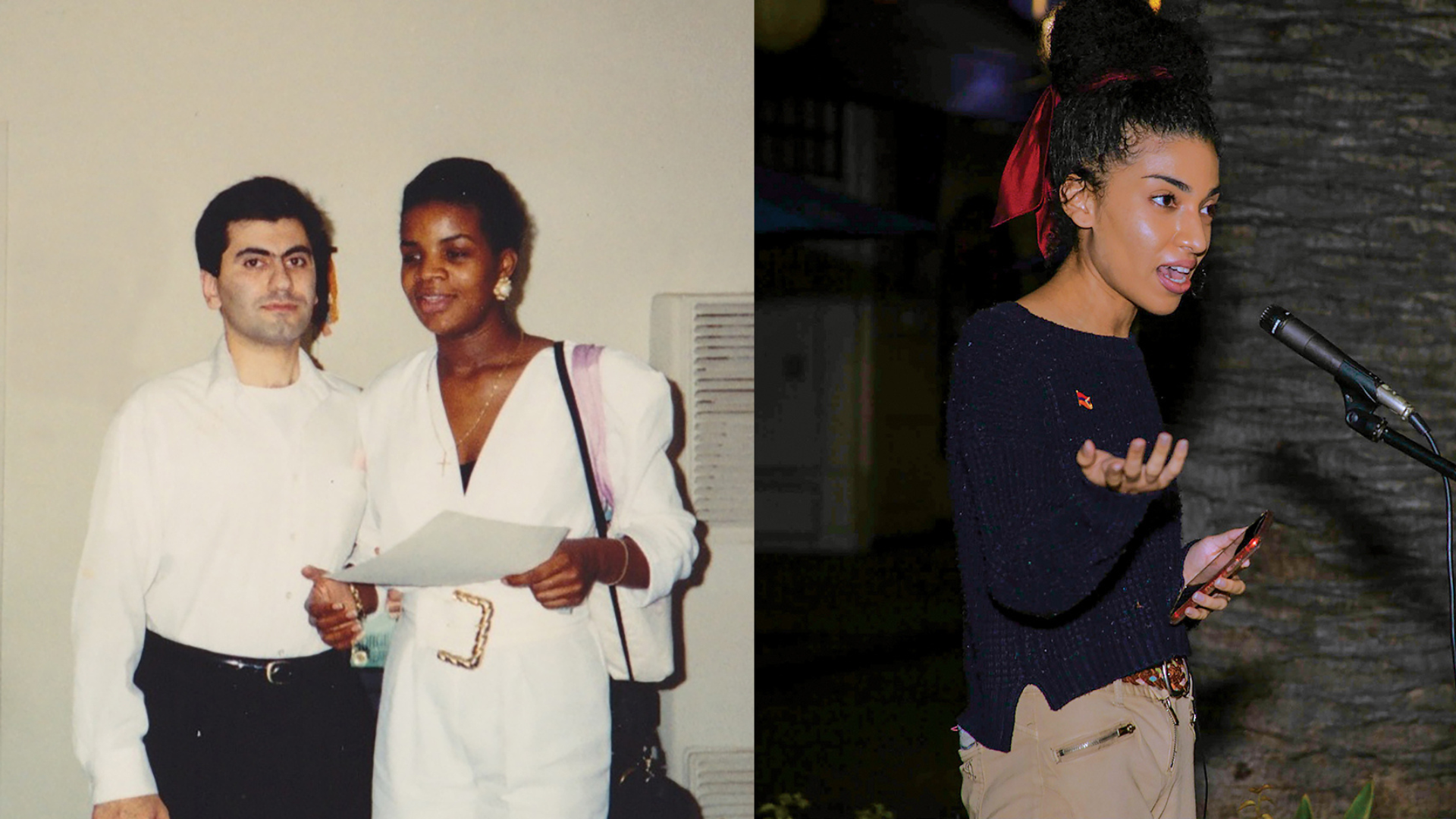
Carene Rose Mekertichyan remembers walking around Glendale with her parents as a young child and watching people hyper-fixate on her appearance, stare, and ask questions about her family. This can be considered a universal childhood experience for those who grew up biracial, especially by parents with starkly different features. “Because I’m mixed race and my hair is very coarse, there were times when my mom would be pushing me in a stroller and people would look at her funny or ask her questions, especially back in the ‘90s. This happened to my dad too—there would be times when we would be in an Armenian market and people would look at me kind of confused,” she shares.
On a more serious note she adds, “No one really experiences that specifically here in the United States the way that Black Armenians do, which is rooted in white supremacy and a whole lot of other things, so it’s always been a journey.” This is just one lasting memory Mekertichyan has growing up as a Black Armenian girl, an identity she is proud to represent and own—as evident on her social media platforms, community work, and advocacy for both cultures.
Mekertichyan grew up as a proud Angeleno with a Black mother from Chicago and Armenian father from Yerevan. The teacher, actress, activist, and storyteller has created an online community for Black Armenians, which originated during the peak of the Black Lives Matter movement when she felt a need for support. She is also the founder of Yerazad, a global coalition dedicated to Armenian liberation and building transnational solidarity—uplifting all Armenians, including mixed race, queer Armenians, and undocumented folks.
She is steeped in both her Armenian activism and work for underserved groups, creating daily action items for her followers. Her identity, she explained, is a culmination of her family history, advocacy, and diverse set of communities—which she considers a privilege.
“A lot of Black Armenians never felt that acceptance and that love growing up that I’ve had spending a lot of time in L.A., which has a huge Armenian community. I was always unapologetically and unconditionally loved in my family,” she shared. “I know other Black Armenians who have distanced themselves from the community, because their own family members would not associate with them or were just always very, very racist to them.”
“No, I’m Black and Armenian. I’m Black Armenian. You can accept me in my wholeness. You don’t have to accept me in spite of my Blackness and try to ignore and erase that part of me.”
Mekertichyan’s online presence, however, has drawn daily hordes of hate and criticism. “I get a lot of folks calling me the N word, calling me all kinds of very horrible things saying I’ll never be Armenian,” she shares. She clarifies: “No, I’m Black and Armenian. I’m Black Armenian. You can accept me in my wholeness. You don’t have to accept me in spite of my Blackness and try to ignore and erase that part of me.”
She wishes she could tell her younger self and other young Black Armenian girls to take up more space and be themselves unconditionally. “You don’t have to prove anything to anyone. Just you being you is enough. You don’t have to feel like an inconvenience to people—don’t be afraid to be unapologetically you, because that’s powerful. Not just as a Black Armenian, but as a woman. People feel threatened by young women and, especially in this country, young Black women who are assertive. And you might deal with people calling you bossy and aggressive, but don’t ever change.”
“This message extends to every Armenian who has ever felt like they’re not Armenian enough for whatever reason. You absolutely are. And you don’t have to ignore the other parts of yourself, whether that’s your identity, specifically, your sexual orientation, your gender identity. You are valid. And you can love all of those parts just as much as you love being Armenian. And that doesn’t take away from being Armenian.”
Black Kochari
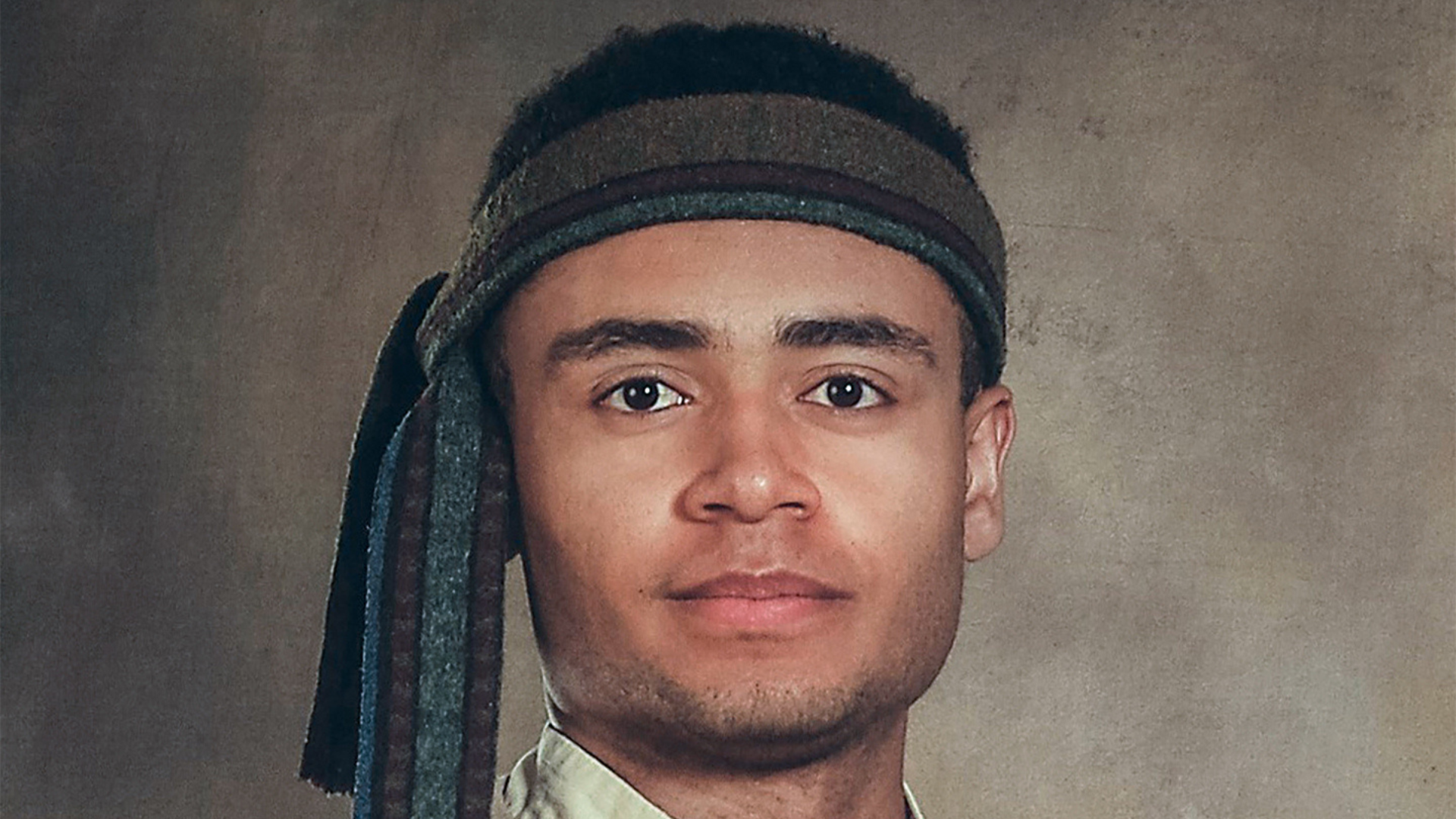
In 2020, Levon Brunson penned an essay for The Armenian Weekly titled “Black Kochari”—a now-viral article that explored his Black Armenian identity through the lens of this nickname given to him by his peers in the Sayat Nova Dance Company of Boston. In the essay, he wrote, “I was given the nickname ‘Black Kochari’ by some friends in the group. Kochari is a war dance—an expression of indomitable strength, courage, and resilience. Being ‘Black Kochari’ represents more than just having dark skin and dancing kochari. It represents the two embattled peoples of which I am a part.”
Being ‘Black Kochari’ represents more than just having dark skin and dancing kochari. It represents the two embattled peoples of which I am a part.
Reflecting on that essay over three years later, Brunson shared that he felt obliged to write about his identity during such a tumultuous period in America and Armenia. In 2020, after the murder of George Floyd, the Black Lives Matter Movement made headlines and woke many people up to the racism deeply rooted in the history of the nation. Shortly after, Azerbaijan launched an attack on indigenous Armenians, overwhelming many diasporans who were fighting against ethnic discrimination.
“At that point in life, I recall there was the BLM movement and there was just a lot happening. Within the Armenian community, there was a lot of conversation about race,” he reflects. “I thought this might be a good opportunity to put some facts out there because there was just a lot of misinformation. I thought if I could help people liken it to their own cause and to their own identity, this might be something that is cleared up to some degree.”
Reflecting on his Black Armenian identity, Brunson said he felt he had a unique experience in terms of the push-and-pull of both cultures. “I was more involved on the Armenian side than on my Black side growing up—and that’s just in part because of the communities that I had access to more so than anything. I think the Armenian community, despite being smaller, usually just had more going on in the places I was living in,” he said. “Culturally, the existential nature of it is very different too. On the Armenian side, we’re constantly under this threat of existence, forget even war for a second, but just the level of assimilation is a constant issue. I’m intentional about being active within the community as a member—individually we have a lot more responsibility than a culture that has, let’s say, 10 million people or 50 million people. I think that level of responsibility is diluted toward those other groups.”
Brunson has never felt that he wasn’t Armenian enough and is extremely proud of both cultures, but chooses to be more active in the Armenian world. “I can speak Armenian fluently. If somebody’s, from the outset, thinking I’m not as Armenian—as soon as they start speaking to me, they realize there’s no qualification that they have that I don’t have in their mind,” he shared. “I never felt like I was not Armenian enough but sometimes I would question, ‘Hey, am I doing enough to be in touch with my Black side?’”
Regardless of grappling with this identity, the young startup founder has made it his mission to dedicate his time and talent to the Armenian World, planning to relocate to Armenia and build up the startup culture there. “I’ve done as much as I can and I don’t feel a ‘wanting’ on either end. I feel quite happy. At this point, I feel like just based on the numbers, I think there’s a lot I can do for the Black community and Armenian issues. They’re both very pressing but there’s fewer people to tackle the Armenian ones.”
Best of Both Worlds
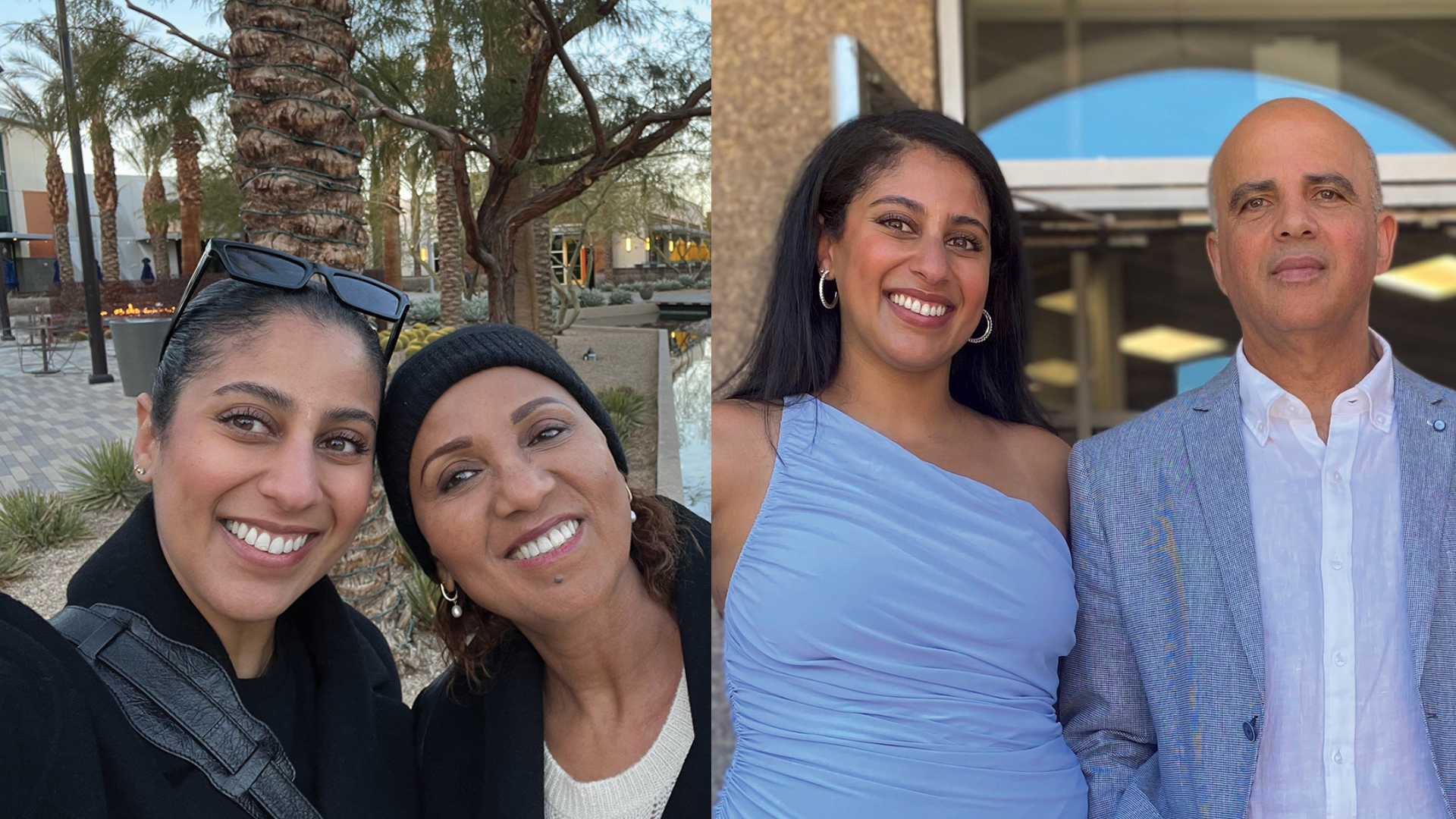
Aphrodite Kazandjian grew up in an Armenian, Ethiopian, and Greek household in Toronto, inheriting her regal name from her paternal Greek side. She attended the AGBU school in Toronto and later Camp Nubar in New York, learning Armenian on top of regularly scheduled academic courses including French and hearing Ethiopian Amharic from her parents, who both speak fluently.
Growing up in such a diverse set of cultures was simply natural to her. “Armenians and Ethiopians are really similar, even down to the alphabet,” she shared over Zoom. “Both cultures are very giving and caring, so it was really the same. I didn’t know any different, so I don’t know if that makes sense, but it was nice—I got the best of both worlds.” However, Kazandjian felt fully immersed in her local Armenian community, citing that 90% of her friends today are of Armenian descent and explaining she doesn’t have an Ethiopoan friend group because most of her friends are from the Armenian community. Although she has fond memories from her youth, she does remember moments of microaggressions here and there because of her multiracial background.
This is not the time to be silent—educate yourselves, teach your family and friends what you have learned, spread your knowledge, and be a part of making the world a tiny bit better.
“My skin color is darker. I don’t look Armenian, I don’t look Ethiopian either. I don’t really look like anything,” she shared. “People actually think I’m Indian or Egyptian, or sometimes they get Persian. I don’t look like anything that I am.” In a 2020 Instagram post for the feminist Armenian group Kooyrigs raising awareness on the Black Armenian experience, she wrote: “At events, whether it be barahantes, church events, Christmas concerts, bazaars, etc. I felt people looking at me. I heard whispering from the Armenian moms and grandmas. Little did they know that I speak Armenian and knew what they were saying.”
“Did it make me feel uncomfortable as a child? Yes. Does it make me feel uncomfortable today as an adult? Yes. I still feel people looking at me differently, probably thinking ‘What is that Black girl doing here?’” But as an adult, she believes her time at Camp Nubar taught her to stay positive, step out of her comfort zone, and learn to lead during times of self-doubt. “This is not the time to be silent—educate yourselves, teach your family and friends what you have learned, spread your knowledge, and be a part of making the world a tiny bit better.”
The Marketing Specialist leans towards her Armenian side, but is extremely proud of both of her identities. “I’m doing the best I can to let people know and educate people who don’t know anything about what’s going on in Armenia or in Ethiopia.”

